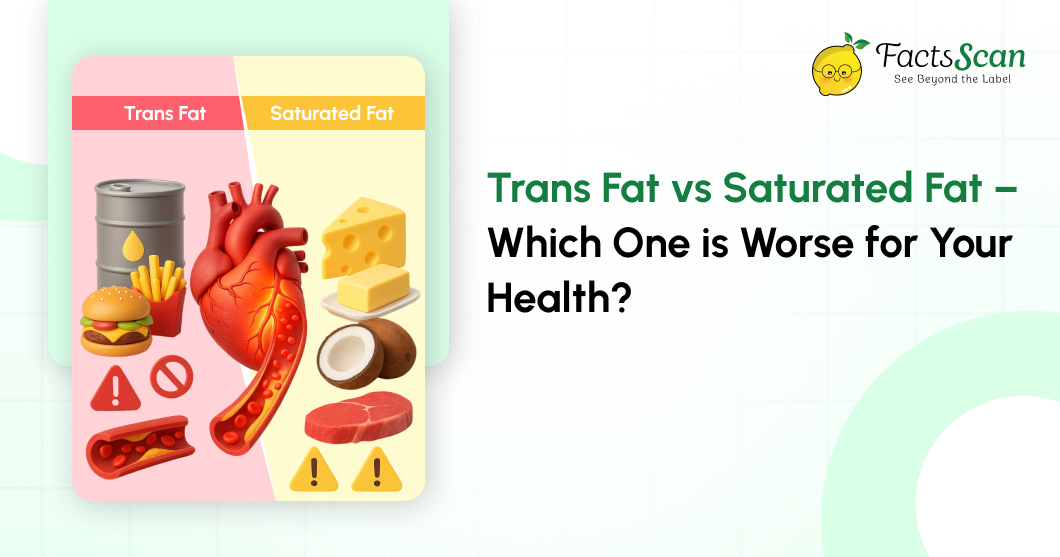Trans Fat vs Saturated Fat – Which One is Worse for Your Health?
Summary :
Trans fat and saturated fat both impact heart health, but trans fat is more dangerous and offers no benefits. Learn their sources, effects, and safe limits. With the FactsScan app, you can instantly scan products, detect unhealthy fats, and choose healthier alternatives for a better lifestyle.
Fats get a lot of mixed messages. On one hand, they’re essential for energy, vitamin absorption, and keeping our cells healthy. On the other, too much of the wrong kind can increase the risk of heart disease. That’s why understanding different types of fats—especially saturated fat and trans fat—is so important. In this article, we’ll break down what these fats are, where they hide, how they affect your body, and simple ways to keep your intake in check. We’ll even show how the FactsScan app helps you spot unhealthy fats in your groceries so you can make healthier choices every day.
What Is Saturated Fat?
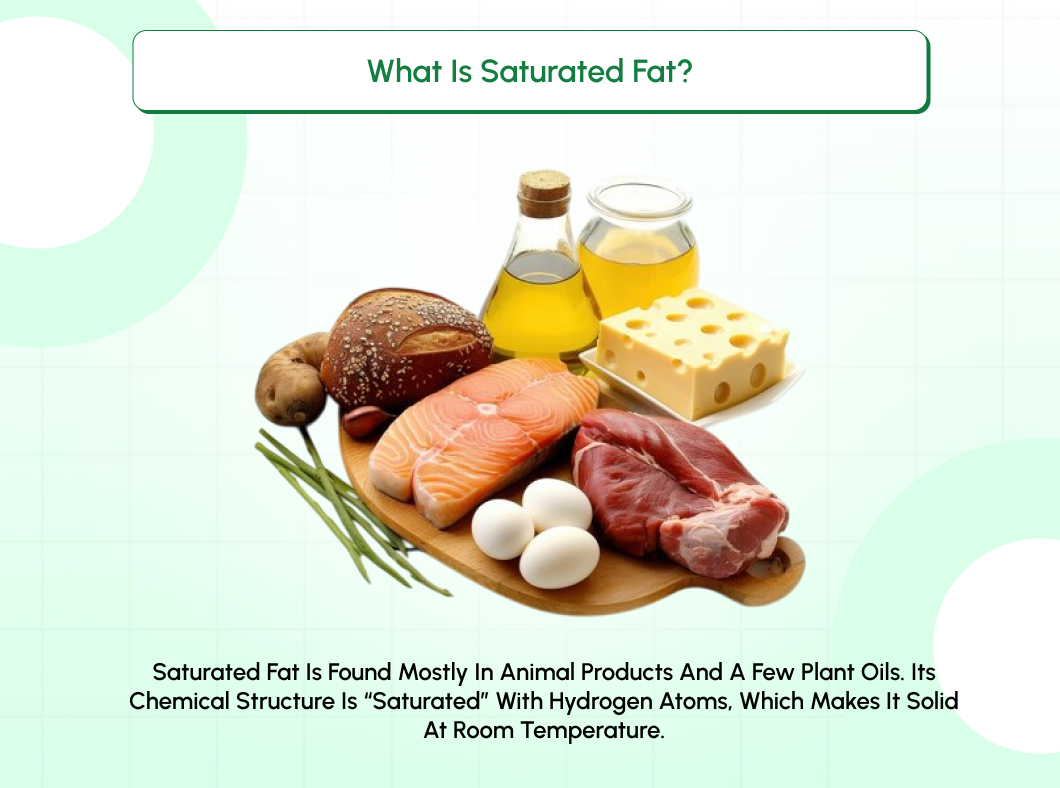
Saturated fat is found mostly in animal products and a few plant oils. Its chemical structure is “saturated” with hydrogen atoms, which makes it solid at room temperature. Think of a stick of butter sitting on your counter—it doesn’t drip or spread easily because it’s packed tight.
Common Sources of Saturated Fat
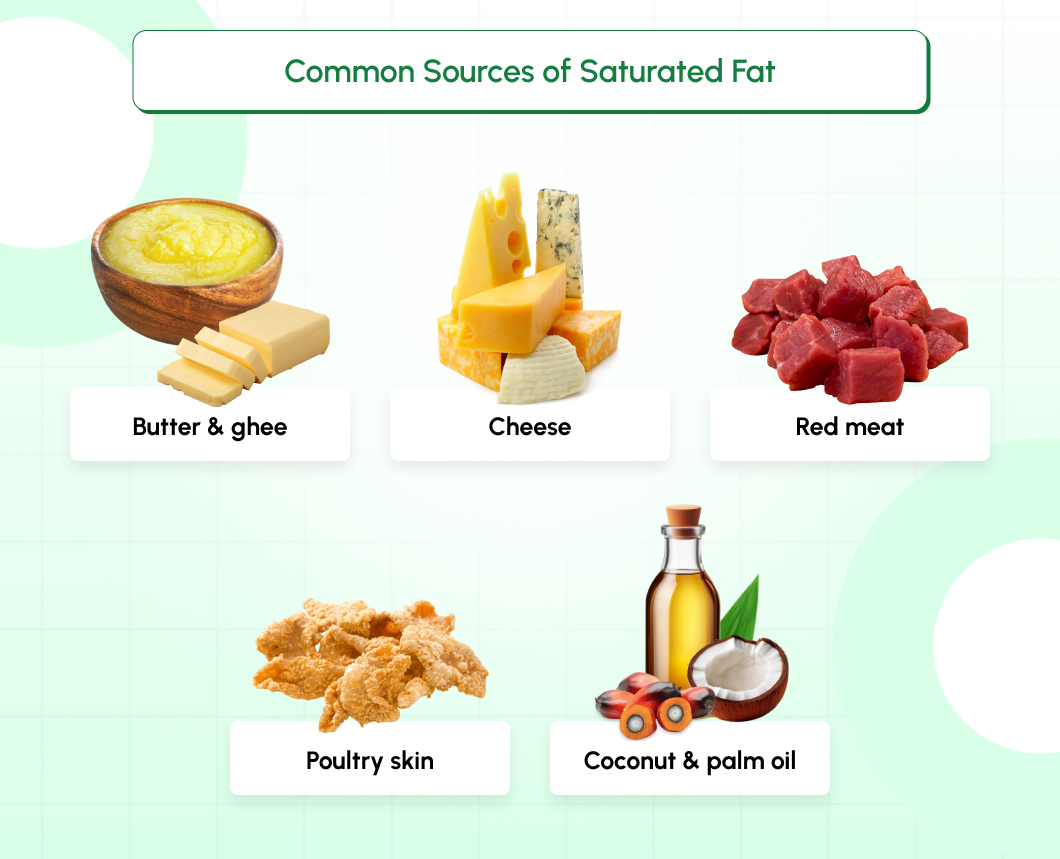
- Butter and ghee: A pat of butter on toast or a drizzle of ghee in cooking adds flavor, but also saturated fat.
- Cheese and full-fat dairy: From creamy brie to sharp cheddar, cheeses are delicious but can be heavy hitters when it comes to saturated fat.
- Red meat: Steaks, burgers, and sausages made from beef or pork often contain visible fat that’s mostly saturated.
- Poultry skin: Crispy chicken skin tastes great but is loaded with saturated fat.
- Coconut and palm oil: These tropical oils are plant-based but behave like animal fats at room temperature, making baked goods tender but also higher in saturated fat.
How Saturated Fat Affects the Body
When you eat saturated fat, it gets broken down and carried through your bloodstream. In moderate amounts, your body manages it fine. But if you regularly overload on cheese, fatty cuts of meat, and creamy sauces, your blood carries more of the “bad” cholesterol (LDL). Over time, LDL can cling to artery walls and form plaque, narrowing the passage for blood flow. This increases the risk of chest pain, heart attacks, and strokes.
Real-life example: Imagine topping your morning toast with extra butter, indulging in cheese-heavy lasagna for lunch, and finishing with coconut-milk ice cream at night. Each serves up a hefty dose of saturated fat. Doing that daily makes it easier for LDL cholesterol to build up, slowly putting stress on your heart.
What Is Trans Fat?
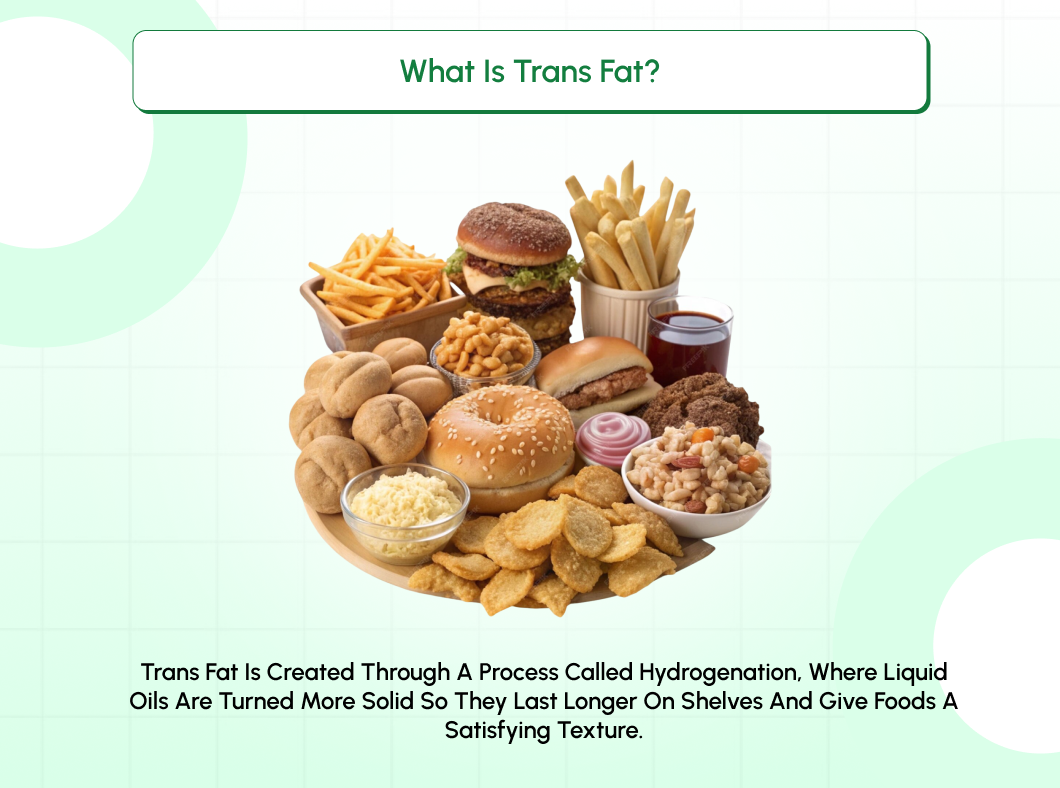
Trans fat is created through a process called hydrogenation, where liquid oils are turned more solid so they last longer on shelves and give foods a satisfying texture. There are two kinds of trans fat: artificial and natural.
Artificial Trans Fat
This is the major concern. Food manufacturers partially hydrogenate vegetable oils to make margarine, shortening, and many baked or fried foods. That means cookies stay crisp longer and fries stay crunchier after cooling. Unfortunately, those same qualities make artificial trans fat particularly harmful.
Common foods with artificial trans fat:
- Stick margarine and vegetable shortening
- Packaged cookies, crackers, and cakes
- Fried fast food like French fries and chicken nuggets
- Microwave popcorn
- Instant noodles and frozen dinners
Natural Trans Fat
A small amount forms naturally in the stomachs of cows and sheep, so you’ll find tiny bits in dairy products and red meat. Scientific studies suggest these natural trans fats aren’t as harmful in small amounts, but they still contribute to overall trans fat intake.
How Trans Fat Affects the Body
Artificial trans fat is sometimes called a “double whammy” because it not only raises LDL (“bad”) cholesterol but also lowers HDL (“good”) cholesterol. HDL helps sweep away excess cholesterol, so losing it means even more buildup in arteries. Over time, this can sharply raise the risk of heart disease—more so than saturated fat alone.
Real-life example: Picture grabbing a bag of microwave popcorn or a fast-food burger and fries several times a week. Even if you’re careful about calories, the hidden trans fat in those snacks is working against your heart by sending bad cholesterol up and good cholesterol down.
Main Differences Between Saturated Fat and Trans Fat
| Feature | Saturated Fat | Trans Fat |
|---|---|---|
| Chemical Structure | No double bonds on the carbon chain | One or more flipped (trans) double bonds |
| Physical Form at Room Temp | Solid (like butter) | Semi-solid to solid (like margarine sticks) |
| Primary Sources | Animal fats (butter, cheese, fatty meat), coconut oil | Artificial: hydrogenated oils in snacks and fried foods Natural: small in beef and dairy |
| Effect on “Bad” Cholesterol | Raises LDL | Raises LDL |
| Effect on “Good” Cholesterol | Little to no effect on HDL | Lowers HDL |
| Net Heart-Health Impact | Moderate increase in risk | High increase—“double whammy” effect on cholesterol |
Health Effects: Breaking It Down
1. Saturated Fat in Everyday Life
When you enjoy a bacon-and-egg breakfast, each bite contains saturated fat that nudges up your LDL cholesterol. Occasional treats are fine, but if every breakfast, lunch, and dinner includes rich, fatty foods, your arteries could slowly narrow.
Example scenario: Eating two slices of pepperoni pizza and half a tub of ice cream daily for a week can raise your LDL measurably. Your doctor might then encourage swapping to lower-fat options or adding more fruits and veggies.
2. Trans Fat and Double Trouble
Trans fat’s unique harm comes from its twin impact: boosting bad cholesterol and erasing good cholesterol. Think of HDL as a street-sweeper that clears debris (cholesterol) from your arteries. Artificial trans fat not only clogs more debris but also takes away your sweeper.
Example scenario: A daily habit of fast-food chicken nuggets and a packaged pastry for dessert can spike your risk of heart attacks over time—even if your total calories remain stable.
Which Is Worse?
While both fats raise heart-disease risk, trans fat is the clear villain. Its two-pronged attack on cholesterol makes it more dangerous than saturated fat. Limiting saturated fat is still wise, but cutting out artificial trans fat entirely should be the priority.
Daily Recommended Limits
Keeping track of fat grams can seem tricky, so here are simple daily targets based on a typical 2,000-calorie diet:
- Saturated Fat: Aim for no more than 20–25 grams per day (about two tablespoons of butter).
- Trans Fat: Keep it under 2 grams per day—better yet, aim for zero by avoiding partially hydrogenated oils.
Most health groups agree: saturated fat should be limited, and trans fat should be eliminated whenever possible.
How to Avoid or Limit These Fats
1. Healthy Cooking Oils:
Use olive, avocado, or sunflower oil instead of butter or margarine sticks. These oils are liquid at room temperature and full of heart-friendly unsaturated fats.
2. Smart Cooking Methods:
Grill, bake, steam, or air-fry foods instead of deep-frying. You’ll cut down on both saturated and trans fats without losing crispiness or flavor.
3. Lean Proteins:
Swap fatty cuts of beef and pork for skinless chicken, turkey, fish, beans, or lentils. These proteins deliver nutrients without packing on unhealthy fats.
4. Low-Fat Dairy:
Choose skim or low-fat milk, yogurt, and cheeses. Dairy can still be creamy and delicious, but with much less saturated fat.
5. Snack Wisely:
Replace packaged pastries, cookies, and chips with fresh fruit, veggies with hummus, or a handful of unsalted nuts.
6. Read Ingredient Lists:
Watch out for “partially hydrogenated oil.” That’s the telltale sign of artificial trans fat—even if the nutrition label says 0 grams per serving.
7. Portion Control:
Enjoy your favorite rich foods occasionally and in small amounts. A little butter on toast or a small slice of cake now and then is okay if balanced with healthier meals.
How FactsScan App Can Help You Avoid Unhealthy Fats
Shopping and eating healthier is easier when you have a smart tool in your pocket. FactsScan is an app designed to help you spot and avoid saturated and trans fats on the fly.
1. Barcode Scan for Instant Insights
- What it does: Point your phone at the barcode of any packaged food.
- Benefit: Within seconds, FactsScan tells you exactly how much saturated and trans fat it contains, so no more guesswork.
2. Decode Nutrition Labels and Ingredients
- What it does: The app breaks down complex nutrition labels into simple summaries and highlights ingredients like “partially hydrogenated oil.”
- Benefit: Even if you don’t know what some words mean, FactsScan explains them in plain language.
3. Smart Recommendations for Healthier Alternatives
- What it does: If your scanned product is high in unhealthy fats, FactsScan suggests better options available in the aisle or nearby stores.
- Benefit: You save time and still get a tasty, healthier substitute.
4. Allergen Detection for Dietary Needs
- What it does: If you need to avoid dairy, gluten, or other allergens, FactsScan flags them instantly.
- Benefit: You can shop confidently, knowing the app watches out for your specific dietary concerns.
Example in Action
Imagine you pick up a packet of instant noodles for a quick lunch. You scan the barcode, and FactsScan flashes:
Warning: Contains 1.5g trans fat and 10g saturated fat per serving.
Suggestion: Try “Green Garden Noodles” with 0g trans fat and 4g saturated fat instead.
You swap to the healthier brand, enjoying your noodles without the extra worry. That small change, repeated over weeks and months, adds up to big gains for your heart health.
Conclusion
Fats aren’t all bad, but two types, saturated and trans, deserve your attention. Saturated fat in moderation is acceptable, but artificial trans fat is best avoided altogether. By choosing healthier oils, lean proteins, smart cooking methods, and checking labels, you can keep your heart in great shape. And with helpful tools like the FactsScan app, identifying and swapping out unhealthy fats becomes effortless. Small steps, like scanning a product before tossing it into your cart, lead to lasting, positive changes. Here’s to smarter choices, healthier meals, and a happier, heart-friendly you!
Ready to make Healthier Choices?
Download FactsScan now from the Google Play Store and App Store and take charge of your food choices.

Recent Articles

Top Food Ingredients You Should Avoid for Better Gut Health
Your gut microbiome is the foundation of your overall wellness, affecting everything from digestion to immune function. Yet many everyday food ingredients—artificial sweeteners, refined oils, emulsifiers, and preservatives—are slowly damaging this delicate ecosystem. Learn which harmful ingredients to eliminate from your diet and discover healthier alternatives using smart tools to identify nutritious, gut-friendly options that truly support your digestive health and long-term wellbeing.
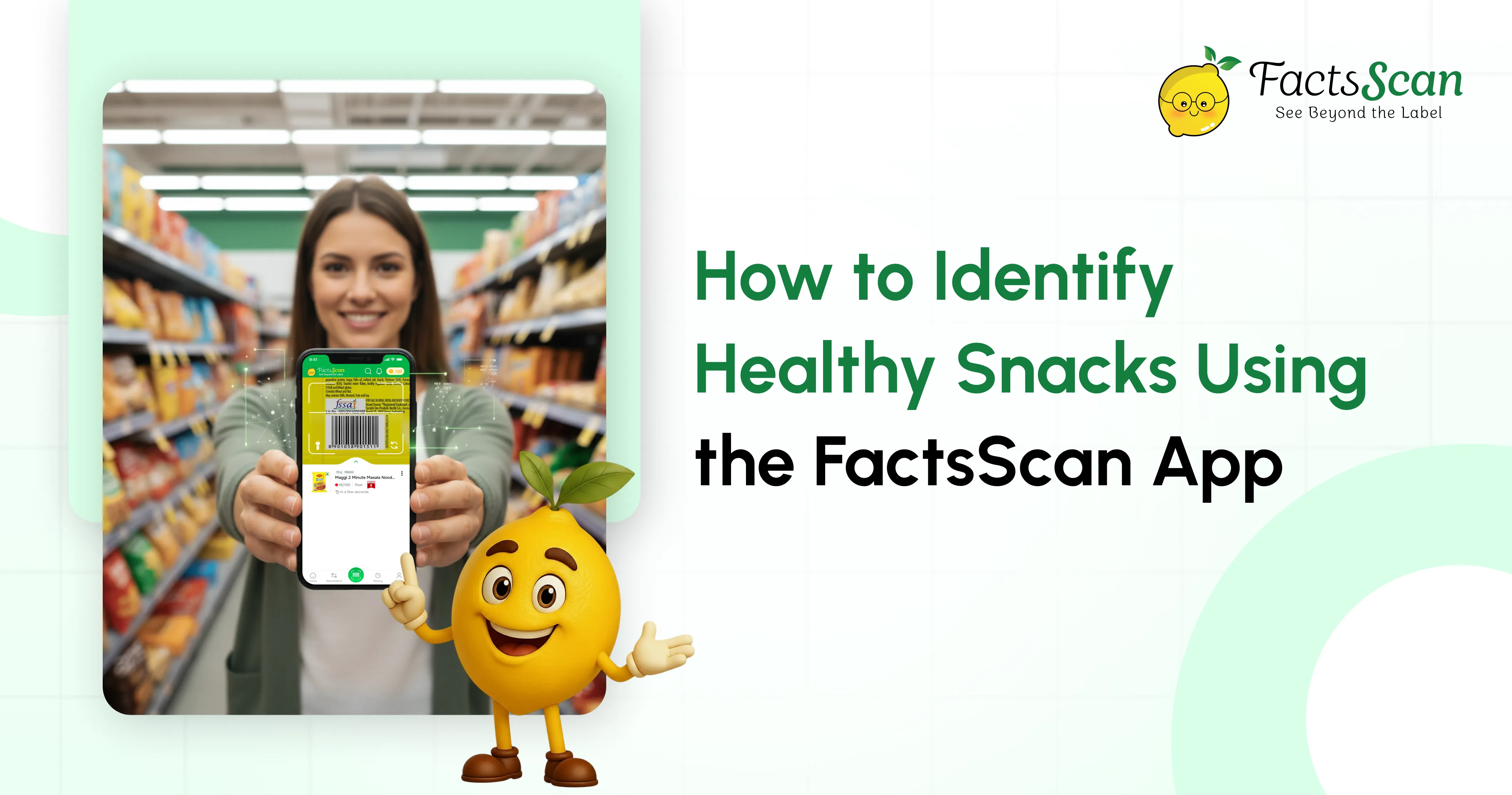
How to Identify Healthy Snacks Using the FactsScan App
Discover how the FactsScan App helps you make smarter snacking choices by instantly analyzing ingredients, nutrition scores, and additives. Learn how this AI-powered tool identifies truly healthy snacks and guides you toward better food decisions with just one scan.
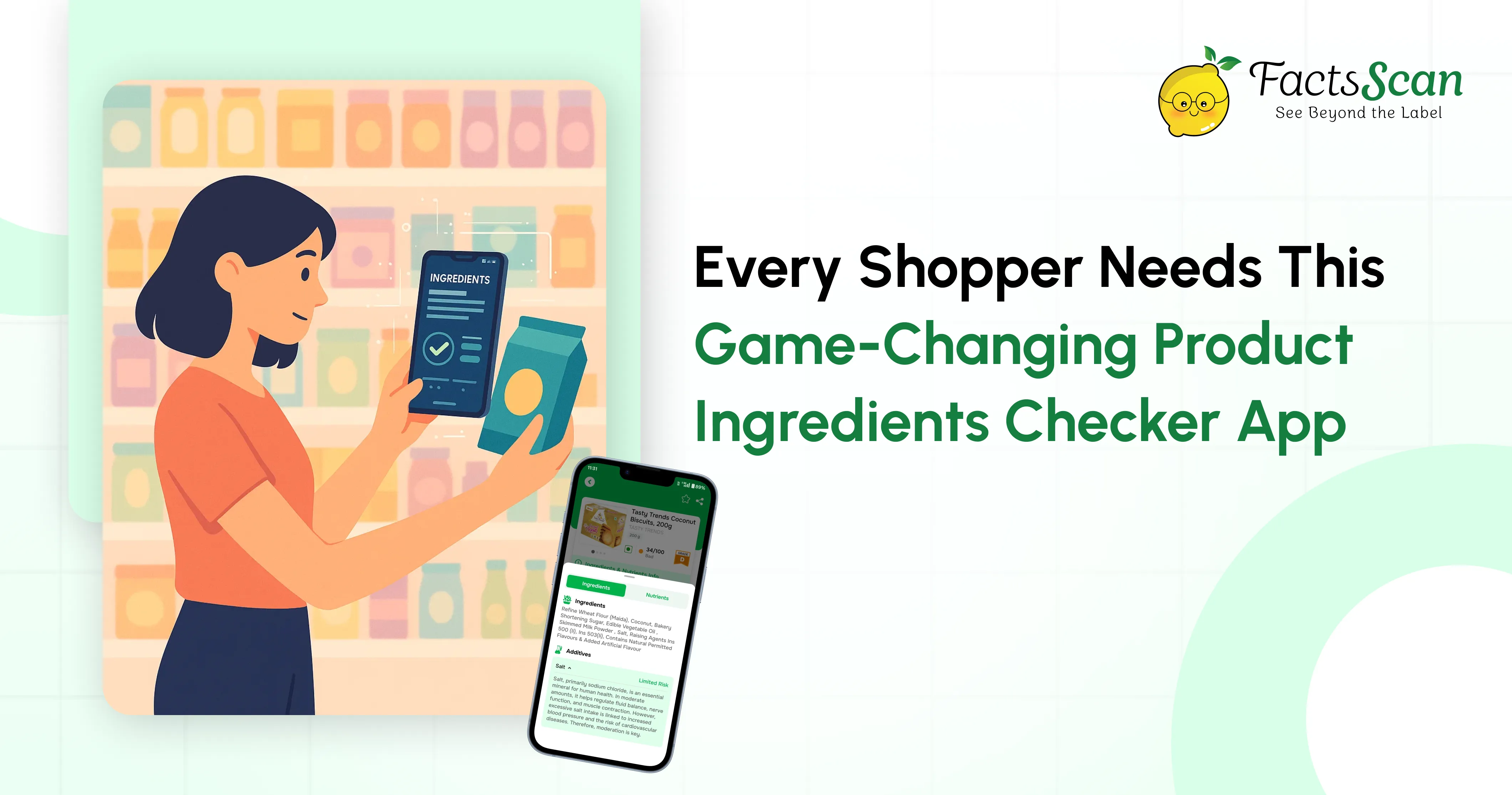
Every Shopper Needs This Game-Changing Product Ingredients Checker App
Tired of confusing food labels and hidden ingredients? This game changing product ingredients checker app helps shoppers instantly scan barcodes to uncover real nutritional facts, health scores, and safer alternatives, making smarter, healthier shopping easier than ever.
 12 Aug 2025
12 Aug 2025 9 Min Read
9 Min Read 
